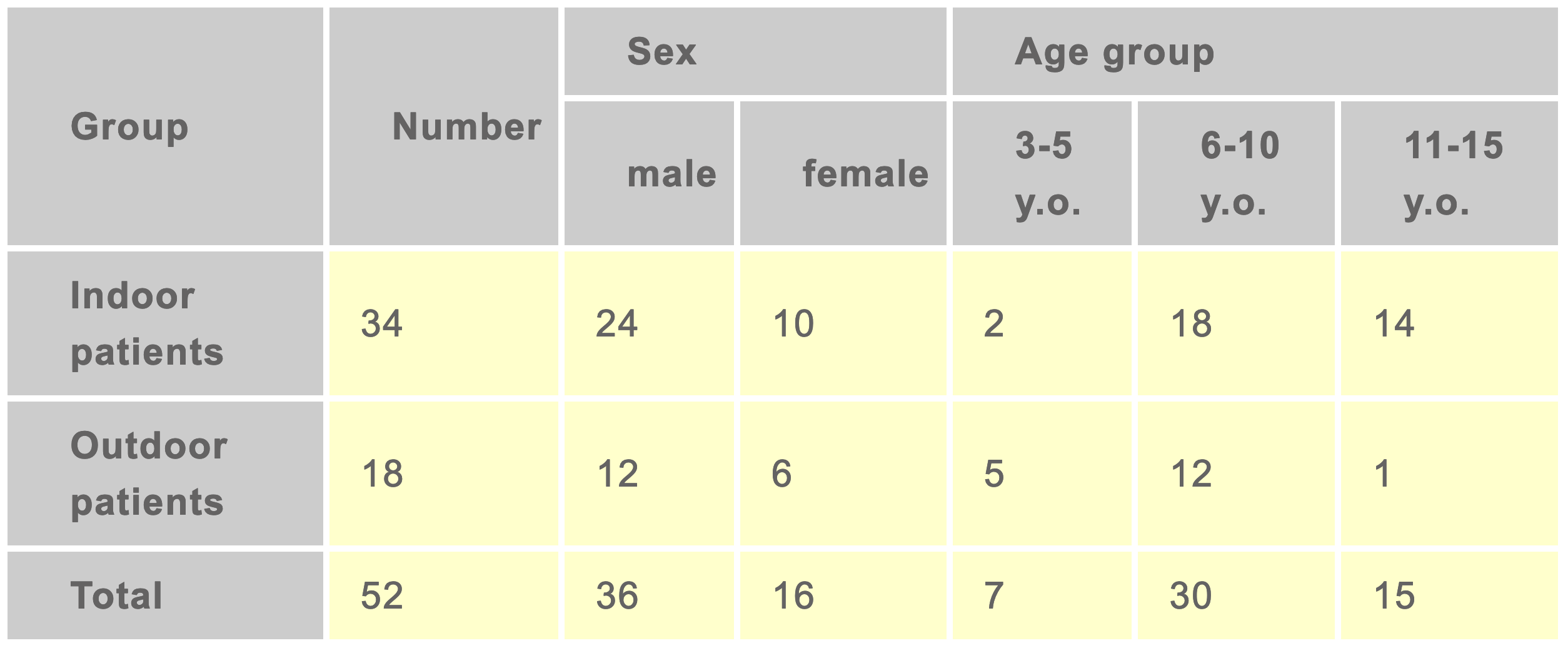
Trials and Research
The clinically confirmed Method since 1960
Clinical Trials
____________
Mater Hospital, Brisbane 1995
A clinical trial funded by Australian Association of Asthma Foundations was conducted in December 1994 - January 1995 through the Mater Hospital (Brisbane). It was conducted by Professor Charles Mitchell and Doctor Simon Bowler. The results were released at the conference for Thoracic physicians Society in Hobart in March 1995.
To compare the efficacy of the Buteyko Method with the conventional asthma treatment 39 asthmatics were recruited following a publicity campaign. All individuals gave a convincing history of asthma and were taking significant doses of asthma medication. They were randomly divided into two groups which were stratified by daily bronchodilators use. Before division medication intake was optimised for one month to minimise usage of bronchodilators. The control group was trained by a physiotherapist in conventional techniques including relaxation, coughing and abdominal breathing techniques. In the Buteyko group Buteyko Method was taught by an experienced Buteyko Practitioner. The trial was ‘blind‘ which means, that neither group was aware of which group they were in.
During the trial asthmatics in both groups were asked to use bronchodilating medication only to overcome asthma symptoms, attempting to minimise bronchodilator usage. Subjects were also required not to change their steroid medication intake during the initial six weeks of the trial. Medication usage, symptoms levels and respiratory parameters were recorded in diary cards for every patient.

Table 1: Summary of the results
At the end of 4 weeks run-in period, at 6 weeks and at 3 months patients from both groups answered a self-administrated quality of life questionnaire. Quality of life was estimated accordingly to the impact of asthma on breathing, mood, social activity and concern for the future.
The New York Times, 2009
____________
A Breathing Technique Offers Help for People With Asthma
According to an article in The New York Times, the Buteyko Breathing Technique has the potential to improve the health and quality of life of many people with asthma while saving healthcare dollars. The treatment is harmless if practiced as directed with a well-trained therapist. For instance, the article describes the case of a well-known maker of violins and cellos, David Wiebe, who had severe asthma that was treated with bronchodilators and steroids for two decades. After discovering the Buteyko Method, Wiebe was able to reduce his use of inhalers and improve his quality of life.
Patients are not told to stop their medications, but most have been able to reduce their dependence on drugs significantly. In controlled clinical trials in Australia and elsewhere, most diligent Buteyko breathing practitioners were found to expect a 90 percent reduction in the use of rescue inhalers and a 50 percent reduction in the need for steroids within three to six months.
The British Thoracic Society has given the Buteyko technique a “B” rating, which means that positive results of the trials are likely to have come from the Buteyko Method and not some other factor. In summary, the Buteyko Breathing Technique is an alternative treatment for asthma that has shown to be effective in reducing the use of rescue inhalers and the need for steroids. Although it is not yet widely accepted in the US, it has been taught in Russian medical schools and covered by insurance in Australia.
Egyptian Journal of Chest Diseases and Tuberculosis, 2012
____________
Effect of Buteyko breathing technique on patients with bronchial asthma
This study aimed to assess the effectiveness of the Buteyko breathing technique in improving lung function and reducing symptoms in patients with bronchial asthma. The study recruited 200 patients with mild-to-moderate asthma, who were randomly assigned to either the Buteyko breathing group or the control group. The Buteyko group received a six-week program of breathing exercises, while the control group received standard asthma care. The primary outcomes of the study were changes in asthma symptom scores and lung function tests.
Asthma is a significant global health problem, affecting people of all ages, and it is one of the most common chronic illnesses. Complementary and alternative therapies (CATs) have gained popularity among patients with chronic illnesses, including asthma. The Buteyko Method is one such CAT that has been used by individuals with asthma. The study is relevant because it assesses the effectiveness of the Buteyko Method as a non-pharmacological approach to manage asthma symptoms.
The Buteyko Method involves a series of breathing exercises that aim to increase carbon dioxide levels in the blood and reduce hyperventilation. The method is based on the premise that individuals with asthma tend to hyperventilate, which can lead to decreased levels of carbon dioxide in the blood and trigger asthma attacks. The Buteyko breathing exercises aim to correct this hyperventilation by teaching individuals to breathe slowly and shallowly, and to exhale for longer periods than they inhale. This can increase carbon dioxide levels in the blood and reduce the likelihood of hyperventilation and subsequent asthma attacks.
The results of the study showed that the group that received the Buteyko breathing technique experienced significant improvements in asthma symptoms and lung function. The Buteyko group showed a decrease in asthma symptom scores and an improvement in lung function tests, compared to the control group. In addition, the Buteyko group showed a decrease in the dosage of inhaled steroids, which suggests that the Buteyko Method can be an effective complementary therapy to reduce the need for medication in individuals with asthma.
Everyone, including individuals with asthma, can benefit from learning the Buteyko Method as a complementary therapy to help control symptoms and reduce the need for medication. The Buteyko method is a non-invasive, drug-free approach to managing asthma symptoms that can be used alongside standard medication. The study mentioned earlier showed that the group that received the Buteyko breathing technique experienced a significant decrease in asthma symptoms and an improvement in lung function. This suggests that incorporating the Buteyko Method into an asthma management plan can lead to better outcomes for patients, including a reduced need for medication.
The Buteyko Method is relatively easy to learn and can be practiced in the comfort of one‘s home. Patients can work with a qualified practitioner to learn the technique and receive ongoing support, but once the method is mastered, it can be practiced independently. The simplicity and accessibility of the Buteyko Method make it an attractive option for patients who are looking for additional ways to manage their asthma symptoms.
The Buteyko Method has been found to be effective not only for asthma but also for other respiratory conditions such as chronic obstructive pulmonary disease (COPD) and anxiety-related breathing disorders. Its potential benefits extend beyond the respiratory system and include improved sleep, reduced stress, and increased exercise tolerance. Additionally, using the Buteyko Method as a complementary therapy may reduce healthcare costs by decreasing the need for medication and hospitalizations.
Sechenov‘s Medical Institute, Moscow 1981
____________
Clinical characteristics of Patients with Bronchial Asthma
The trial involved patients suffering from regular asthma attacks (once a day or more) during the previous month. Some of the patients had severe asthmatic conditions leading to asphyxia. The purpose of the experiment was to demonstrate the relationship between the major symptoms of the disease (bronchospasm, cough, blockage of nose, etc.) and hyperventilation. The patients were asked to undergo a three stage hyperventilation test (developed by Professor Buteyko in 1968).
- The test was conducted in a sitting position. The patients were asked to use the BVB method. In 1 to 5 minutes of using the method asthma symptoms decreased or disappeared and the patients experienced relief from tightness, wheezing, cough or rhinitis.
- On the second stage patients were asked to do the opposite: to breathe deeply for 15 to 60 seconds to provoke symptoms of asthma.
- The patients were asked to return to the BVB and thus prevent the onset of the attack independently.

Table 1: Age and sex distributions of patients
If the patients did not understand the relationship between the hyperventilation and the disease, the test was repeated. The test was not conducted if the patients took a bronchodilator 1.5 to 2 hours prior to the test. Fifty two patients between the ages of 3 and 15 were treated according to the BVB method: 36 boys (69%) and 16 girls (31%). 16 from 52 children (65%) were hospitalised, 18 or (35%) were outpatients Twenty-four or (46%) had atopic bronchial asthma, 22 or (42%) had mixed bronchial asthma and 6 or (12%) had bacterial allergy bronchial asthma. The majority of the patients (36) had been suffering from this condition for up to 5 years, 12 for between 6 to 10 years and 4 from 11 to 15 years. The patients were divided into three categories: mild, severe and very severe (see Table II).

Table 2: Patients distribution by asthma severity
According to patients‘ histories, 41 cases (79%) had pneumonia 1 to 7 times. Four (8%) were taking corticosteroids (prednisone tablets) prior to the BVB treatment. Six (11%) were physically handicapped, 9 (17%) were obese; all the children had bad posture, 11(21.2%) had chest deformity. Most of the children (33 or 64%) had allergic reactions to medication, 34 (65%) allergic reactions to food and 25 (48%) allergic reactions to dust. Twenty-seven (52%) suffered from rhinitis, 18 (34.6%) had Quinke‘s oedema. 47 (90%) had a predisposition to colds and flu. All had problems with breathing through the nose, 36 (69%) chronic tonsillitis, 11(21%) sinus problems. 23 (44%) had frequent headaches, all had palpitations and 13 (25%) had unstable body temperature.
The results of the Buteyko Method
Fifty two children were observed for between 29 and 84 days. The results were based on the following criteria:
- no improvement;
- some improvement (the degree of attacks is lessened together with a considerable reduction in medication);
- considerable improvement (cessation of the heavy attacks, slight traces of the disease or a total disappearance of the symptoms).

Table 3: Results of the clinicial trial
Forty-three (83%) of the patients showed considerable improvement and nine (17%) showed some improvement. There were no cases showing no improvement. The average period of hospitalisation was 16 days. MI the patients with bronchial asthma (52) improved in the first four days. They could breath freely through the nose and their coughs and wheezing disappeared. Fifteen experienced self-cleansing reactions, manifesting themselves through nervous excitement, chills, raised temperatures (up to 390), headaches, muscular pains, intestinal pains. chest pains, weakness and hyper secretion of, mucus. Some experienced appetite loss, nausea. vomiting, thirst, excessive salivation (smelling of their medication) and increased urination and defecation. These reactions lasted from a few hours to two days and happened 2 to 3 times. The tie in the condition of the patient was relative to the length of the control pause (A measure of the concentration of carbon dioxide in the alveoli. Clinically defined as the length of time (or which a patient is comfortable after a normal exhalation though the nose.).
Conclusions
- The BVB method as suggested by Professor Buteyko helps to decrease the number and severity of attacks as well as the dosage of medication.
- As a result of this therapy, the indicators of acid-alkali balance and lung ventilation improved.
- The method may be taught to children from 3 years of age up either in hospital or as outpatients.
- This method is endured by children of any age over 3.
- This method is most effective in acute periods of bronchial asthma in very ill patients.